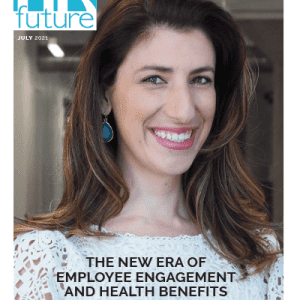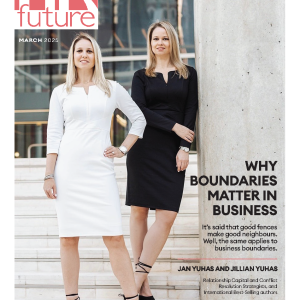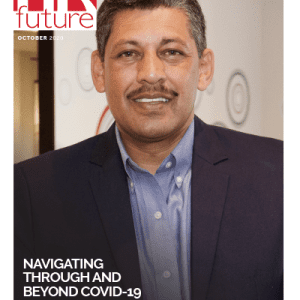Institutionalized discrimination and the pandemic have given rise to a pivotal, brand-defining time. Now more than ever, prospective employees are keeping a watchful eye on whether companies take a powerful stand for equality or remain silent about systemic racism. Against this backdrop, employers are under heightened scrutiny to take bold action – to do what’s right over what’s easy and put the greater good of humanity above the bottom line.
As a result, HR leaders are investing in policies and procedures to enable a more diverse workforce. Diversity, nonetheless, remains a challenge, as women, people of color and members of the LGBTQ community are still wholly underrepresented in the leadership ranks of corporate America. Unconscious bias, cultural upbringing and personal beliefs and convictions continue to shape hiring managers’ decision-making, often overshadowing the talent (and opportunity) on the table. Research shows that employers tend to hire people who are similar to them in appearance, culture, creed and experience. Less than 1% of Fortune 500 CEOs are black, 7.4% are women, and senior leadership still consists primarily of white men. Moreover, the black-white wage gap has been increasing exponentially for decades: The average wage in 2019 was $21.05 for black workers and $28.66 for white workers, according to the Economic Policy Institute. This empathizes the phrase: birds of a feather truly do flock together.
The sad truth is that everyone is inherently biased in some way. We all have preconceived notions and unspoken filters through which we view the world. And unfortunately, that mindset can have an adverse impact on an organization’s brand identity, values, culture and, most importantly, the employee experience.
As an HR leader, here’s how you can identify, acknowledge, mitigate and measure those biases at every stage of the employment lifecycle (from recruiting to hiring, from managing to promoting, and from performance evaluation to retaining talent) to ignite radical change within an organization.
- Understand the scope of unconscious bias. Unconscious bias isn’t conscious discrimination, it’s our brain’s automatic tendency for social categorization. Consider, for instance, when women represented just 6% of the Boston Symphony Orchestra, it quickly rolled up its sleeves and reimagined its hiring strategies. Initially, it implemented blind auditions (i.e., auditions from behind a curtain), but this did not significantly change the number of women who advanced and were selected for the symphony. The immediate assumption was that men simply played better. Eventually, however, it discovered that unconscious bias had influenced their decisions – when women applicants walked across the stage to audition, the hiring managers could hear their heels clicking across the floor. Ultimately, they asked all applicants to remove their shoes. The result: The number of women who advanced or were selected increased by more than 50%. Armed with this knowledge and potential scope of unconscious bias, HR leaders can help hiring managers question their assumptions and amend their definition of truth vs. perception.
- Identify variables that may inadvertently impact decision-making. When coaching a hiring manager, HR leaders should also be mindful of how the resume’s content may unintentionally influence decision-making. For instance, when a hiring manager sees an applicant’s name, college attended for higher education, year of graduation, etc., it is common to make conclusions about that person and their ability to do the job (based upon the hiring manager’s past experiences alone). These assumptions are often far from the truth.
To remedy this situation, HR leaders may consider training to effectively identify and isolate these biases, especially those that are not aligned with the minimum job requirements. Consider for instance, a training exercise where the HR leader distributes pictures of people – e.g., a man wearing a turban or a woman with glasses. They then ask the group: What career does this person have? What music do they listen to? What do they value? This simple exercise would highlight the fact that the mere responses are unconscious biases, and shine a powerful light on how destructive preconceived notions can be. This exercise would also allow the HR leader to swiftly reframe the thinking—before the hiring process begins.
- Remove bias from the equation. In the recruiting stages, HR leaders can also reduce unconscious bias by being cognizant of the language used within job descriptions – this includes recognizing terminology that may have a more masculine connotation (strong, competitive, self-reliant, independent) versus feminine connotation (collaborative, community, dependable, team-oriented). The rule of thumb is to keep the language job centric, while keeping job requirements to a minimum. Research demonstrates that women tend to apply for positions when they meet all minimum requirements, whereas men will apply for positions even if they only have a fraction of the minimum requirements. In a similar vein, because women are typically offered a lower salary than their male counterparts (and people of color are offered even less), it is important for HR leaders to set salary ranges prior to posting the positions so subjectivity does not negatively impact the starting wage offered to the applicants.
In the hiring stages, when evaluating resumes, HR leaders may consider redacting all non-relevant information from the application materials (e.g., applicant name, college name, religious preference, graduation dates, etc.); leverage a diverse interview panel to review applications to ensure that diverse perspectives and experiences are championed and encouraged; and only evaluate applicants against the pre-identified minimum requirements for the position (not on any outside factors).
Finally, HR leaders may consider requesting a diversity statement from all applicants, punctuating an organization’s commitment to diversity. Research shows that this increases the diversity of the applicant pool. That said, hiring managers should review these statements last to reduce the impact of unconscious bias in the decision-making process. It is very common to make assumptions about an applicant’s cultural fit or preferred ways of working if a hiring manager reviews the diversity statement prior to evaluating the application materials against the minimum requirements for the position. And before making a final decision, HR leaders should ask hiring managers a simple question – could unconscious bias be influencing this decision? This question may lead to an effective pause before an offer is sent out the door.
- Take accountability to track and measure equality. Lastly, the success of any diversity initiative relies on diligent data analysis, accountability and measurement. HR leaders may consider keeping a tracker to denote how many women and people of color are employed and retained at the organization, how many of those people have advanced into leadership positions, how often are they encouraged to have a voice in strategic meetings, and whether they receive equal benefits (parental leave, PTO, flex work schedules, sick time, etc.) for comparable work, etc. According to Harvard Business Review, “while 42% of companies check for bias in reviews and promotions by gender, only 18% track outcomes for the compounding bias of race and gender.”
It’s not enough to provide vague platitudes and promises of cultural change – the time is now for HR leaders to put their words into action. When HR leaders make a conscious effort to recognize and stop unconscious bias in its tracks, it bolsters organizational retention, productivity, performance, creativity and insights that may have otherwise been overlooked. Harnessing unconscious bias can unlock better decision-making, uncover diverse ideas that drive better business solutions and, ultimately, drive workplace equality – both now and into the future.
Heyke Kirkendall-Baker brings more than 25 years of experience in human resources and employment law to her current role as president and co-founder of Parity Software, a pay equity solution provider based in Portland, Oregon. Parity Software is an automated, on-demand, cloud-based solution designed by HR professionals for HR professionals to ensure employees are earning compensation that is internally equitable.

























